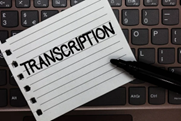Coding, Transcription, and Translation Procedures

Step 3 – Establish and document coding, transcription, and translation procedures
Once you have established a tracking and filing system, you will need to focus on coding, transcription, and translation protocols. Different quantitative and qualitative research methods will produce different types of raw data which will determine how the data is coded for further analysis.
Coding

For quantitative and qualitative research, the data that is collected must be coded in order to be analyzed. Coding allows the researcher to reduce large quantities of information into a more manageable set of attributes than are easier to handled and work with computationally. Most of the time coding is done manually and is a time-consuming process, but technology is making this process easier. For example, computers have made it possible to simultaneously collect and code survey data while audio transcribers have made coding and classifying verbal responses easier.
The coding process begins with the preparation of the codebook which provides the definitions for the variables in the research and explains, in detail, how those variables will be represented (i.e., coded) for further analysis. Accompanying the codebook are the instructions for how the data will be coded and entered in the data entry system for further analysis. It is important to prepare detailed instructions for the data coding and data entry process, especially if the data coding task is performed by several different people. Depending on the scope of the research project, the entire coding process may be done by a single person. However, for larger projects, it is more likely that there will be more than one person coding the data which makes the need for the codebook and instructions even more imperative.
Data coding can be done directly on the data collection instrument and then transferred to a collection sheet, or it can be entered directly into a computer storage system. If data are to be entered into a computer program, such as a spreadsheet, database, or statistical program, it must be entered in exactly the same way for each participant. This helps to maintain the consistency, accuracy, and integrity of the data.
Transcription

It should be stressed at this point that once you establish a transcription format you need to stick with that format to avoid confusion and delays. Therefore, you need to do some forward projecting and base your decision on the responses to some guiding questions. Once these questions are answered, it is then possible to established what the research transcription and translation procedures should be. It should also be noted that sensitive information, and those who provide it, need to be protected so it may be necessary to have those individual doing the transcribing and translation to sign Non-Disclosure Agreements (NDAs).
Question: How will transcriptions be done?
Will transcription be done verbatim or will the data be synthesized and condensed. Verbatim transcription tends to be preferable, but it is time consuming at both the initial stage and during the editing stage. Depending on the size and scope of the project, it may be necessary to have multiple people doing the transcription. The goal is to get accurate data that is not distorted or misrepresented. Therefore, a clear set of protocols need to be in place that all transcribers can follow and should include the layout and content coding.
Question: Who will do the transcribing?
This may be a function of your budget. Will you do the transcribing yourself, hire your own full time or part-time transcription staff, or outsource it to a professional transcription service? Many small businesses opt to do this themselves, so if you choose this path you need to set aside an adequate amount of time for each stage of the process.
Question: Will translation be necessary?
This may also be a function of your budget but for certain research projects it may be an unavoidable expense. Just like transcription, translating takes a significant amount of time. This is another area where distortion and misrepresentation can occur which is why it requires diligent supervision to ensure robust quality control. The person doing the translation needs to be fluent in both the language of the respondents and the language being translated to. The same hold true for the person doing the editing. Just as with transcribing, you can do this yourself inhouse, hire your own full time or part-time translational specialist, or outsource it to a professional translation service?